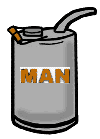|
Past Preventive Maintenance columns: Frequently
Asked PM Questions Machining
Center PMIndex and NC Tables Examining
Accuracies on Machining Centers Zero
Points on Machining CentersMachining Centers vs.
Lathes Completing
Lathe MaintenanceTailstock, Sub-Spindle, and
Zero-Point Alignment A
Closer Look at Spindles and Turrets The
Next Level: AccuracyChecking Backlash on Lathes
Inspecting
the Electrical Cabinet Everyone's
Favorite TaskCleaning CoolantThe
Most Ignored Fluid in your Machines It's
SummertimeIs your Chiller Working? The
Other OilsInspecting the Main Hydraulic Systems
|
MIKE BREEN ON PREVENTIVE MAINTENANCE |
|
Leveling Is It
an Issue by Michael W. Breen |
|
|
Last month, we began talking about squareness checks and examining the level of machines. We will work on lathes this month and move on to machining centers and mills next month. You should have at least one level that is accurate to a minimum of 0.0002" per grid. Ideally, levels should be 3" to 5" in length. The smaller they are, the easier they are to handle. If you have more than one level, you do not have to move them once they are placed on the machine. Levels should be positioned parallel to the axis. On a lathe, place one level parallel to the X-axis and the other parallel to the Z-axis. On a mill or machining center, position levels on the machining table in a cross pattern. First, let us talk about what we are looking for when using a level. Most maintenance personnel know the machine needs to be brought into EARTH level so fluids drain properly and reservoir level sight glasses give an accurate fluid level. Once that is complete, the machine needs to be checked for twist. Checking for Twist on Lathes Mount the levels on the cross slide (most machine tools will specify where levels should be placed) and move the Z- and X-axis to their maximum stroke in either the + or direction. Let the level settle, and note the exact location of the bubble in the level. If you are using one level, it will have to be rotated 90° and back at every checkpoint. Now move the axis in the opposite direction. The physical size of the slide will dictate if you need to make a couple of stop checks along the way. On large machines, I will stop the cross slide when the weight is centered on a leveling jack. When you stop, let the level settle and note where the bubble is now. It should be where it was when you first started. If not, you have twist in your machine bed. Depending on the job and the accuracy of the machine, you are generally allowed to have some twist. If you are using a tailstock, bed twist will affect the part. If you have a 0.0002" dip in the bed, your part will reflect that dip. If your lathe is primarily used as a chucker, the bed twist will not be as much of a factor, unless you are using long tools. Removing Twist To remove the twist, start tweaking the leveling bolts. This is where it gets a little tricky. It takes a lot of experience to do this, so be patient and take your time. After you get the twist out of the machining area, you will need to look at your tailstock and spindle heights. In reference to the spindle, place a test bar in the chuck (make sure there is no rotational run out), then place the indicator tip on the top of the test bar and tram the bar. The indicator should not move. If it does, try to adjust the leveling bolts on the backside of the spindle. This practice will only remove a couple of tenths. Anything more may require some shimming. Check the machining area again after this is complete. As far as the tailstock is concerned, extend the quill and tram your indicator across the top of the quill. Try to adjust the leveling bolts behind the tailstock. Once again, this practice will only remove a very small amount of run-out before it will start to affect your machining area. Remember, this practice can be cumbersome and, depending on the tolerance of your part, going any farther than checking the machining area twist may not be necessary. Leveling machining centers and mills gets a little more complicated. We will address this issue in the July column. So, get started on the lathe, and let me know how you do. Talk to you next month. Mike Breens career of more than 14 years in machine tool repair includes his experience as an aircraft electrician in the U.S. Armys 101st Airborne. He is a Certified Electronic engineer, presently working as a Field Service Engineer with Ellison Machinery Company of Wisconsin. Mike invites you to share your own machine repair and maintenance experiences with him. For comments and inquiries about these articles, his e-mail address is mbreen@ellisonwi.com. - June 2001 |

 You bet it is, especially on machining centers and mills.
You bet it is, especially on machining centers and mills.